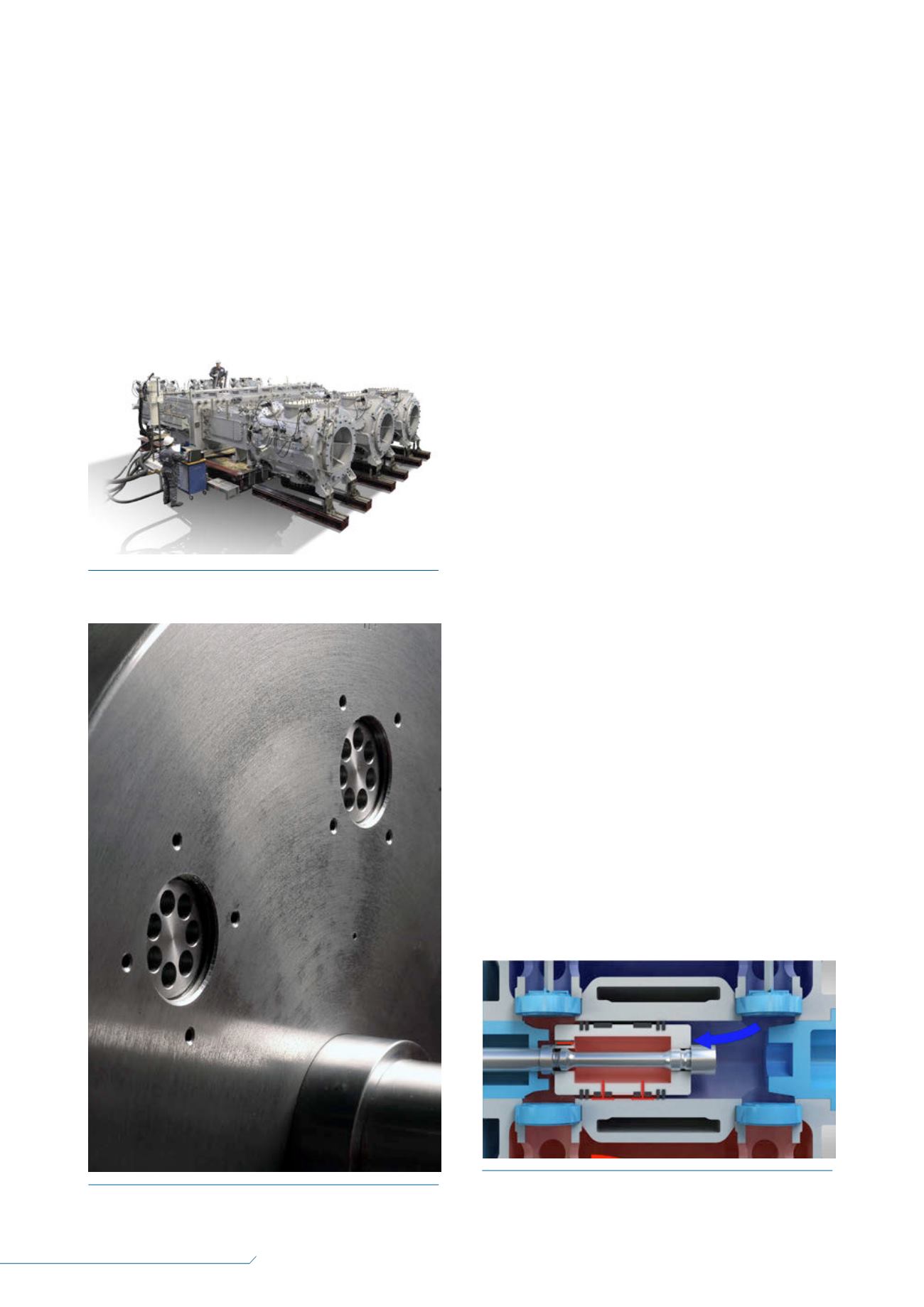
52
LNG
INDUSTRY
APRIL
2016
BOG in LNG terminals
LNG is stored as a boiling cryogenic fluid and does
not change as it is cooled by evaporation. BOG is
generated in LNG tanks and liquid-filled lines as a result
of heat influx from the environment. In order to avoid
environmental impact and loss of revenue to the owner’s
operations, BOG is generally not flared, but collected and
either recondensed or compressed for use as fuel gas or
grid send-out. Compression of the BOG is also required
prior to recondensation, as there is no cold energy source
available to condense the BOG at atmospheric pressure.
The amount of BOG that can be recondensed depends
on the amount of LNG send-out, because the LNG is
used as the cold energy source to condense the BOG. If
there is insufficient LNG send-out, the vapour must be
compressed to pipeline pressure.
During ship unloading, the quantity of BOG generated
in the tanks and piping increases significantly. This
additional vapour consists of: volume displaced in the
tanks by the incoming LNG; vapour resulting from the
release of energy input by the ship’s pumps; flash vapour
due to the pressure difference between the ship and the
storage tanks; and vaporisation from heat leakage
through the unloading arms and transfer lines. An increase
by a factor of 4 can be expected during unloading.
Technology considerations
for BOG compressors
In comparison to refinery applications, BOG compressors
do not run at constant operating conditions, because the
amount of BOG can differ significantly over time. The flow
is dependent on the amount of liquid in the tank, as well
as heat ingress. Furthermore, the flow increases heavily
during ship unloading. Therefore, it is required that BOG
compressors are equipped with provisions for capacity
control to be able to handle these variable boil-off
conditions.
Due to the low operating temperatures, lubrication of
compressor cylinders by means of mineral oils or
synthetic lubricants is not possible. Oil-free compressor
cylinders are mandatory for BOG compressors, due to the
oil behaviour at cryogenic temperatures. For instance, oil
could stick to the chillers and clog the piping system
during and after recondensation. Research has shown that
operating in the hydrocarbon mist (typically found in a
BOG compressor) can increase the wear by a factor of
400 – 500%. Therefore, rider rings, which carry the
weight of the piston and piston rod in horizontal
reciprocating compressors (Figure 1), and are always one
of the most vulnerable abrasion points in oil-free
compressors, may have to be replaced four to five times
more often than in conventional, non-lubricated
applications. Furthermore, the wear of the conventional
rider rings in oil-free compressors is unpredictable,
making a linear wear forecast virtually impossible in
scheduling maintenance stops by using a condition-based
maintenance approach. Failing to replace a worn down
Figure 1.
Howden Thomassen’s six-cylinder C-85.6
compressor.
Figure 2.
Free Floating Piston (FFP
TM
) check valves.
Figure 3.
FFP operation principle for a double acting
compressor cylinder.


